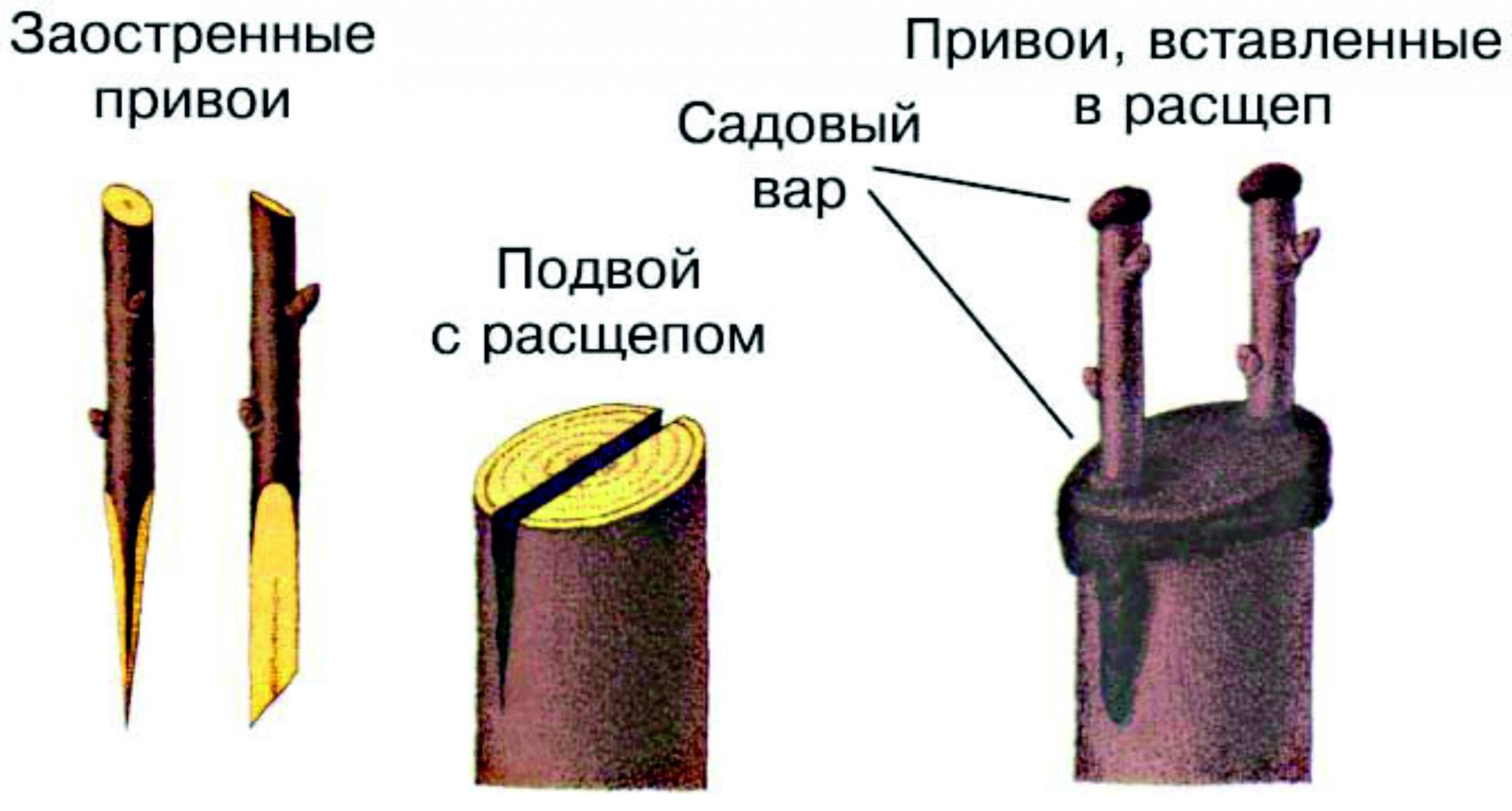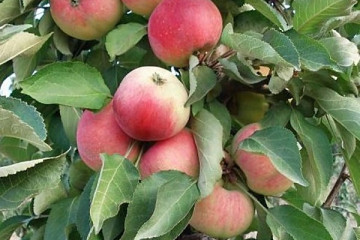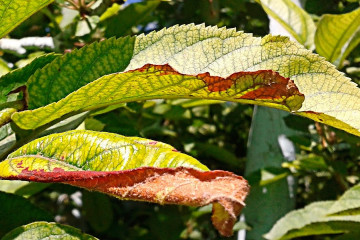How to plant an apple tree with fresh branches on the wild
Content:
In order for fruit trees to bear a good harvest, they must be properly cared for. Among the entire list of mandatory procedures, such as watering apple trees, treating pests and crowning branches, grafting a tree occupies an important place - an event that is not mandatory, but has a positive effect on growth, development and the ability to bear fruit.
When is it better to plant an apple tree
There is no specific calendar date. When to graft an apple tree depends on factors such as the climate and temperature regime of the area where the plant is growing. If the tree is healthy, grafting can be carried out throughout the year, taking into account the peculiarities of performing this procedure at one time or another.
Features of grafting an apple tree in spring
Despite the fact that it is allowed to plant an apple tree all year round, it should be remembered that the most correct solution for a gardener would be to perform the procedure in the spring. And there is the following explanation for this: the ability of plants to regenerate in spring increases, so the probability of scion survival is very high. If the cuttings have not taken root, there will be time to perform the repeated procedure before the arrival of cold weather. Apple budding in spring (bud) is carried out at the beginning of May.
Grafting an apple tree in summer
Grafting of an apple tree in summer begins in the third decade of June and can last for a month (in the southern part of the country, the terms increase by several weeks depending on weather conditions). The main advantage of the summer procedure is the availability of a large selection of cuttings (both in terms of quantity and variety), as well as the ability to check the result in the current season.
Grafting an apple tree in the fall
Autumn is not the best period for this procedure: the plants shed their leaves, go into a dormant state, slowing down the sap flow in the branches necessary for successful grafting, and low air temperature can negatively affect the scion, preventing it from taking root.
However, some methods of vaccination can be used in the fall. The first half of it is suitable for grafting seedlings and young trees by the splitting method, behind the bark. In the second half, the plant will most likely have to be grafted indoors.
Grafting an apple tree in winter
Vaccination in winter is carried out indoors, therefore it is often called "table".
In such conditions, a positive result can be achieved only by working with young plants that are preparing for planting in the spring.
When combining plants in winter, you must adhere to certain rules:
- the removal of the scion is carried out before the onset of cold weather, the optimum temperature is more than +8 degrees;
- you need to store the stock at a temperature of about 0 degrees, they are transferred to a room with a positive temperature only a week or two before vaccination;
- it is best to vaccinate in January-March - two weeks before planting plants in open ground;
- after grafting, the plant is stored in a heated room.
Why plant an apple tree in the summer with fresh branches
Most horticulturists prefer grafting apple trees in summer with fresh green twigs. It is noted that such a procedure has many advantages:
- with summer grafting, cuttings take root and begin to bear fruit a season earlier than with autumn;
- no need to prepare the grafting material in advance. Freshly cut branches can be grafted, while for spring grafting, cuttings must be harvested in the fall;
- fresh cuttings are always quality material. In the case of summer vaccinations, they are fully utilized. Branches harvested in autumn may deteriorate during wintering.
Scion and rootstock selection rules
The final result is primarily influenced by the quality of the selected scion and rootstock. For the procedure to be successful, it is important to adhere to the following recommendations:
- choose healthy plants for grafting, without stem defects;
- the stock should be up to three years old;
- the scion should be harvested from trees that bear fruit for more than two years.
The genetic similarity of varieties also affects the effectiveness of grafting an apple tree. The positive outcome is higher in related trees. But this does not mean that other trees are not suitable for rootstock. For many years, scientists have been experimenting with the grafting of distant and very different externally plants, and the apple tree in this case is no exception.
Gardeners sometimes face the question of whether it is possible and how to plant an apple tree on the wild, what result should be expected. It is allowed to use different methods, the result is a tree rich in fruits and resistant to cold climates.
Cherry
The graft has a good chance of taking root, but the stalk does not develop well. It will not be possible to achieve a good harvest, because the cherry cannot withstand the heavy branches of the apple tree.
On irgu
Irga is a dwarf stock. For the vaccination to be successful, it must be done at a height of 15-20 cm from ground level. The branches of the apple tree will need props to prevent breaking.
On viburnum
The apple scion takes root well, the apple tree becomes more frost-resistant. In this case, the fruits become smaller.
On the aspen
Attempts are made only for the sake of experimentation. With a successful procedure, the vitality of the apple tree decreases.
On quince
There are not as many known successful cases of this connection as there are attempts made. With a positive outcome, the fruits on the branches are significantly reduced in size.
On the birch
Most attempts to graft an apple tree to a birch tree end in failure. The birch stock does not accept the apple stock well.
On a mountain ash
Grafting an apple tree on a mountain ash is not always successful; beginners and experienced gardeners are trying to improve the method. Rowan as a rootstock is interesting for its properties - resistance to cold, unpretentiousness to the ground, etc.
On a pear
It is difficult for a pear to accept other trees, so the procedure for grafting an apple tree onto a pear is difficult. If you go the opposite way - pears against an apple tree, the likelihood of success increases. For this case, different methods are suitable, even budding and copulation.
What is needed for vaccination
For the success of all actions with scion and stock, it is important to have a suitable set of tools with you. You should get:
- a knife with a very sharp and short blade;
- a special knife for grafting;
- budding and copulating knife;
- garden pruner.
Types and methods of vaccination
There are various ways to graft an apple tree. Basically, all methods are quite old, but this does not affect the effectiveness.
Into the cleft
This method is used with branches of different diameters. The stock must be split in half, then several cuttings with the correct long cut are inserted into it. After removing the top of the scion (up to 2-3 buds), it is necessary to wrap with foil.
For the bark
Many are interested in how you can graft apple trees by the bark method. This type of grafting is ideal for trees that have been growing for 3 years or more. The method is complex, because you need the most accurate, confident movements. It is recommended to perform the procedure in the spring, since at this time it is easier to separate the bark from the branches. You can plant no more than four cuttings at a time. The instruction consists of the following steps:
- The selected site for inoculation should be located about a meter from the ground;
- Using a sharp knife, an incision is made 4-5 cm long.
- Carefully move the bark away from the branch.
- Cut off the bottom of the cutting and bring it behind the bark.
- The wrapping can be done with polyethylene.
Budding apple seedlings using the knip-baum method
To speed up the fruiting process, there is a technology for grafting trees using the knip-baum method. To do this, you need to do the following:
- in the first year of growing seedlings, it is necessary to plant a stock and make it budding;
- the second year is devoted to the cultivation of the one-year
- in the third year, you need to cut off one-year-olds at a height of 70-90 cm, drive out a strong, central conductor from the upper bud with short lateral shoots and obtuse angles of departure from the central trunk, where fruit buds are laid.
Side cut
The beginning of spring is the perfect moment for this method. Vaccination is performed in the following sequence:
- An incision is made in the rootstock at an angle of 20-25 degrees.
- The lower end of the cutting with several healthy buds should be sharpened on both sides.
- Insert the handle into the incision.
- Wrap with tape or special (food) film.
- Shorten the top of the stock by several buds.
- After fusion (usually after 3 weeks), remove the winding.
Bridge grafting
It is possible to save trees damaged by animals thanks to this method. But it should be applied only before the start of sap flow. The technique is to:
- Clean the bark from damaged layers.
- Above and below you need to make cuts (3-4 cm) in the form of the letter T.
- Remove the existing buds on the cuttings and sharpen them on both sides.
- Fold back the edges of the cut and place the end of the cutting there.
- Fix well with a bandage, tape, and then apply var.
Apple tree care after vaccination
The final result depends on the proper care of the tree after grafting. To be successful, you need to do the following:
- The shoots that appear on the scion near the vaccination must be removed. Otherwise, a significant part of the nutrients will go to them.
- Birds should not be allowed to the place of accretion, because they can violate the integrity.
- After a month, the winding must be removed.
- After 3 weeks, the tree needs feeding.
- Do not forget about the timely watering of the tree.
Possible mistakes of novice gardeners
Most often, gardeners with little experience in grafting trees have a low percentage of successful actions. The main problem is the rapid drying of cuttings and buds, which occurs due to poor fusion of the scion and rootstock.This error occurs mainly due to the lack of fit of the slices.
Another reason is poor protection against pests and bacterial growth. Sufficient attention should be paid to the treatment of injured areas with garden varnish.
For a successful vaccination, you should consider common mistakes and avoid them:
- it is not necessary to make budding from the south side of the tree, because the spring rays of the sun negatively affect accretion;
- during the rain, you need to refrain from the procedure;
- the scion must be cut off at rest;
- the instruments used must be clean and treated with alcohol;
- the kidney should not be opened;

To avoid contamination of the cut site, it is important to apply the adhesive tape with the sticky side out.
At first glance, grafting an apple tree seems to be a difficult and painstaking process, but, taking into account all these recommendations, a gardener can successfully cope with this without such experience earlier. This procedure allows you to create new flavors and rich fruit yields.




















